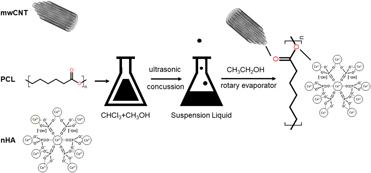Crossref Citations
This article has been cited by the following publications. This list is generated based on data provided by
Crossref.
Arumugam, S.
and
Ju, Y.
2021.
Carbon nanotubes reinforced with natural/synthetic polymers to mimic the extracellular matrices of bone – a review.
Materials Today Chemistry,
Vol. 20,
Issue. ,
p.
100420.
Amiryaghoubi, Nazanin
Fathi, Marziyeh
Barzegari, Abolfazl
Barar, Jaleh
Omidian, Hossein
and
Omidi, Yadollah
2021.
Recent advances in polymeric scaffolds containing carbon nanotube and graphene oxide for cartilage and bone regeneration.
Materials Today Communications,
Vol. 26,
Issue. ,
p.
102097.
Khalid, Muhammad Yasir
Arif, Zia Ullah
and
Ahmed, Waqas
2022.
4D Printing: Technological and Manufacturing Renaissance.
Macromolecular Materials and Engineering,
Vol. 307,
Issue. 8,
Chen, Ying
and
Li, Xiaoming
2022.
The utilization of carbon-based nanomaterials in bone tissue regeneration and engineering: Respective featured applications and future prospects.
Medicine in Novel Technology and Devices,
Vol. 16,
Issue. ,
p.
100168.
Ghosh, Sougata
and
Mostafavi, Ebrahim
2023.
Functionalized Carbon Nanotubes for Biomedical Applications.
p.
225.
Priyam, Ayushi
Afonso, Luis O. B.
Schultz, Aaron G.
Dinda, Amit Kumar
and
Singh, Pushplata Prasad
2023.
Hemocompatibility of biogenic phosphorus nano-agromaterials at environmentally relevant and supra-environmental concentrations for occupational exposure.
Environmental Science: Advances,
Vol. 2,
Issue. 2,
p.
313.
Mobin, Mohammad
Aslam, Ruby
Zehra, Saman
Aslam, Jeenat
and
Islam bhat, Shahidul
2023.
Functionalized Carbon Nanotubes for Biomedical Applications.
p.
257.
Akiyama, Naomi
Patel, Kapil D.
Jang, Eun Jo
Shannon, Mark R.
Patel, Rajkumar
Patel, Madhumita
and
Perriman, Adam Willis
2023.
Tubular nanomaterials for bone tissue engineering.
Journal of Materials Chemistry B,
Vol. 11,
Issue. 27,
p.
6225.
Eivazzadeh-Keihan, Reza
Sadat, Zahra
Lalebeigi, Farnaz
Naderi, Nooshin
Panahi, Leila
Ganjali, Fatemeh
Mahdian, Sakineh
Saadatidizaji, Zahra
Mahdavi, Mohammad
Chidar, Elham
Soleimani, Erfan
Ghaee, Azadeh
Maleki, Ali
and
Zare, Iman
2024.
Effects of mechanical properties of carbon-based nanocomposites on scaffolds for tissue engineering applications: a comprehensive review.
Nanoscale Advances,
Vol. 6,
Issue. 2,
p.
337.
Golubchikov, Daniil O.
Petrov, Alexander K.
Popkov, Vasily A.
Evdokimov, Pavel V.
and
Putlayev, Valery I.
2025.
Advances in the Fabrication of Polycaprolactone-Based Composite Scaffolds for Bone Tissue Engineering: From Chemical Composition to Scaffold Architecture.
ACS Biomaterials Science & Engineering,
Vol. 11,
Issue. 6,
p.
3201.
